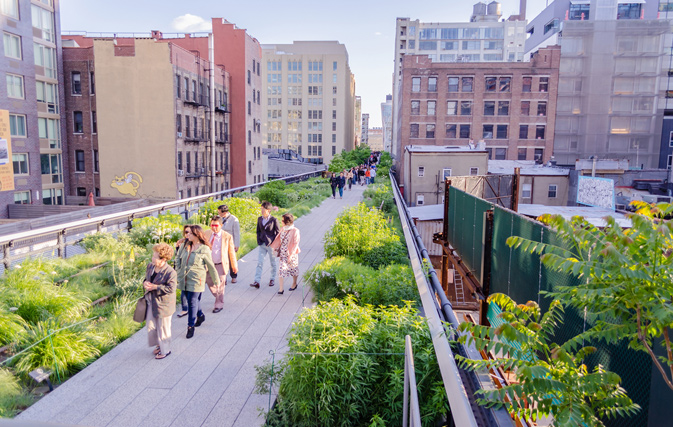NEW YORK — The last stretch of New York’s High Line opened Sunday, completing one of the nation’s most distinctive urban transformations: abandoned elevated rails that have been turned into a linear oasis of flowers, grasses and trees.
That last, half-mile section finishes the 22-block walkway that over five years has helped drive the hip gentrification of the Chelsea neighbourhood on Manhattan’s West Side. Luxury condos, galleries, restaurants and boutiques have all but pushed out the industrial grime around the old freight route that once delivered goods to warehouses, meatpacking and manufacturing plants.
“The High Line has changed the dynamics of the city,” says Laurance Rassin, an artist showcasing his paintings and sculptures to visitors along the three-story-high walkway. “If Picasso were alive, he’d be painting on the High Line.”
As visitors stroll or relax on benches, actors read Shakespeare, musicians play violin and flute, and children gather for outdoor storytelling.
“I get to talk to everyone from students to movie stars, and I find out about different parts of the world,” says Rassin, who lives in a luxury high-rise overlooking the new, northern stretch.
That part of the park curves around Hudson Yards, a mammoth high-rise development that by 2024 will be home to more than a dozen new skyscrapers. Sections of rusty tracks are still visible in spots, a reminder of the area’s dirty and dangerous past.
Street-level freight trains ran on Manhattan’s West Side between 1851 and 1929, causing so many accidents that Tenth Avenue was known as “Death Alley.” So-called “West Side Cowboys” on horses rode in front of the trains to prevent collisions with vehicles and pedestrians.
That hazard spurred construction of the elevated High Line in 1934, allowing trains to roll right up to and, in some cases, inside buildings to deliver milk, meat, produce and other goods. The rise of interstate trucking led to the railway’s demise, and the last train ran in 1980, pulling carloads of frozen turkeys.
In 1999, when the weed-choked relic was under threat of demolition, a community-based non-profit calling itself the Friends of the High Line was formed to find another use for it.
“We wanted to create a space where people could be immersed in nature,” says the group’s co-founder, Robert Hammond.
The High Line park — built with $223 million in both government and private funds — draws nearly 5 million visitors a year, offering an expansive view of midtown Manhattan and the Hudson River. Visitors walk on concrete slabs softened by grasses, shrubs, and trees peeking from crevices and benches surrounded by blossoms.
On both sides along the High Line, private day-to-day lives becomes public.
One afternoon, a dog poked its head out of a brownstone window. And at night, with apartment lights on, a woman could be seen cooking in her tiny kitchen, steam rising from a pot.
It’s a New York feast of old and new, rich and poor, American and foreign.
“I’ve never seen anything like this, up in the air where you walk, and you can sit on benches in the sun near little gardens,” says Renata Buergel, an attorney from Hanover, Germany. “It’s a highlight of New York City, something new and special, young and green.”
For some, it means more money coming in.
At the High Line Pizza shop just under the elevated park, employees say business has more than doubled in the past two years.
But there’s a downside to the success. Some businesses in run-down brownstones have simply been shuttered as rents rise in the now-hot neighbourhood.
For Auto Designs NYC, which customizes luxury cars, the nearby High Line is a nuisance.
“We get nothing out of it,” says employee Peter Makar. “Our rent went up, and about 16 times a day, I get asked for directions to the High Line.”
“And it’s right here,” he adds, pointing up.
